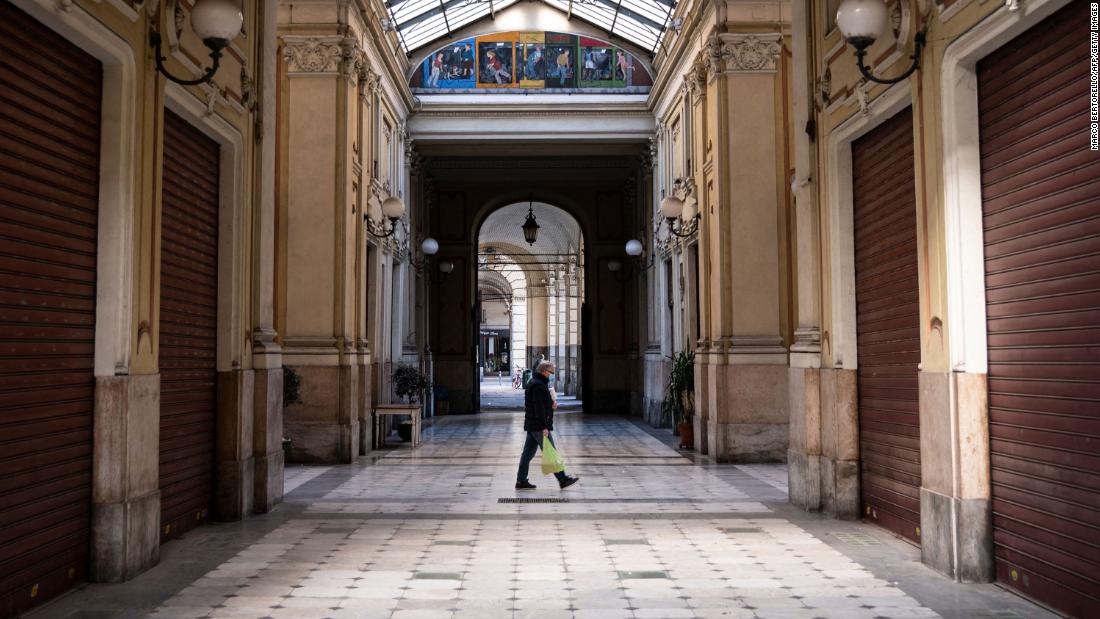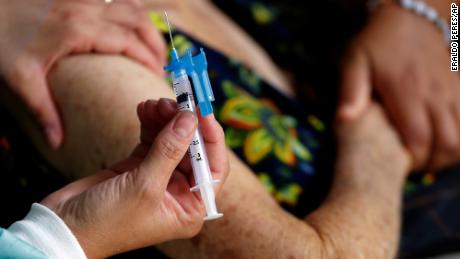Critics say the new restrictions have come too late and that Europe’s current problems can be traced back to politicians too eager to start easing.
“The second wave did not end, the lockdown was interrupted too soon, to let people go shopping for Christmas,” French epidemiologist Catherine Hill told CNN. She said infection levels remained at a high level. “Recently admission in intensive care units have [been increasing] regularly, and the situation is now critical in several parts of the country, including greater Paris.”
Alessandro Grimaldi, the director of infectious diseases at Salvatore Hospital in the Italian town of L’Aquila, told CNN the new more contagious variant had “changed the game,” adding that “inevitably, the measures taken to prevent the infection have to become more drastic.”
World Health Organization warned about this nearly two months ago, when it became clear the UK variant was circulating in most of Europe. “Once it becomes dominant, it may impact the epidemic curve overall and lead to the need for a more restrictive approach to the public health and social measures that need to be in place, so that rates of transmission can decrease,” WHO’s Senior Emergency Officer for Europe, Catherine Smallwood, said at the time.
That has now happened. Germany’s center for disease control announced on March 10 that the UK variant had become the dominant strain in Germany. The new variant is also responsible for the majority of new cases in France and Italy, according to health officials there. In Spain, B.1.1.7 is now the dominant strain in nine of the country’s 19 regions.
But there is another reason why US experts are worried about what is happening in Europe right now.
But while the trends looked promising, the case numbers were still very high. And that became a major problem when the new wave started — making the new lockdowns necessary, Grimaldi said.
“It’s not easy to do lockdowns, because of the economic despair it brings … the life style change it brings,” he said. “But they are indispensable in trying to make the virus stop.”
He said that data from a recent study by the University in Bologna has shown that the most stringent lockdown measures, refered to as “the red zones” in Italy do work — leading to as much as 91% drop in number of Covid-related deaths.
A delay in the decision to impose lockdowns can be deadly. The Resolution Foundation, a British think tank, said Thursday that an extra 27,000 people died of Covid-19 because the government delayed the start of the country’s latest lockdown until January, despite evidence of fast rising cases in December.
He observed that after promising declines in Covid-19 numbers, some European countries “pulled back on public health measures” which has led to the new spikes.
Mike Tildesley, an infectious disease modeling expert at the University Warwick and a UK government scientific adviser, said that the slower rollout of vaccines in many European countries means they are facing a higher risk of seeing large waves of new cases. “Sadly until nations get close to herd immunity we are likely to see waves of infection occurring as countries cycle between phases of lockdown,” he said.
Grimaldi said that while vaccination plays a major role in fighting the epidemic, it has to come hand-in-hand with the safety measures, because the more the virus keeps circulating in the population, the higher the chance it could mutate further. “The virus will try to survive despite the vaccine, so lockdowns are really the only way to stop the virus from circulating,” he said.
The World Health Organization on Thursday warned that Europe’s vaccination campaigns aren’t yet slowing transmission of the coronavirus. The continent recorded more than 1.2 million new infections last week, and more than 20,000 people a week are dying of Covid-19.
And the pandemic is “moving eastwards,” Kluge added, with infection rates and deaths in central Europe, the Balkans and Baltic states among the highest in the world.
A new model published in The Lancet journal on Thursday showed that vaccinations alone might not be enough to contain the epidemic, stressing the need for gradual easing of the restrictions rather than a big bang reopening.
Hill, the French epidemiologist, added that testing must also remain a key part of the strategy. “To control the epidemic one needs to test massively the population in order to find and isolate the carriers of the virus,” she said, pointing to the estimated 50% of infections that are caused by individuals who do not know they have Covid-19.
The new wave of higher case numbers isn’t limited to Europe. Case numbers have increased 10% globally over the past week to over 3 million new reported cases, according to WHO’s latest situation report.
The number of new cases peaked in early January, but then declined for four weeks in row before increased for the past three weeks. The number of people dying is still declining and has dropped to below 60,000 per week last week, the first time this happened since early November.
CNN’s Eliza Mackintosh contributed to this report.



